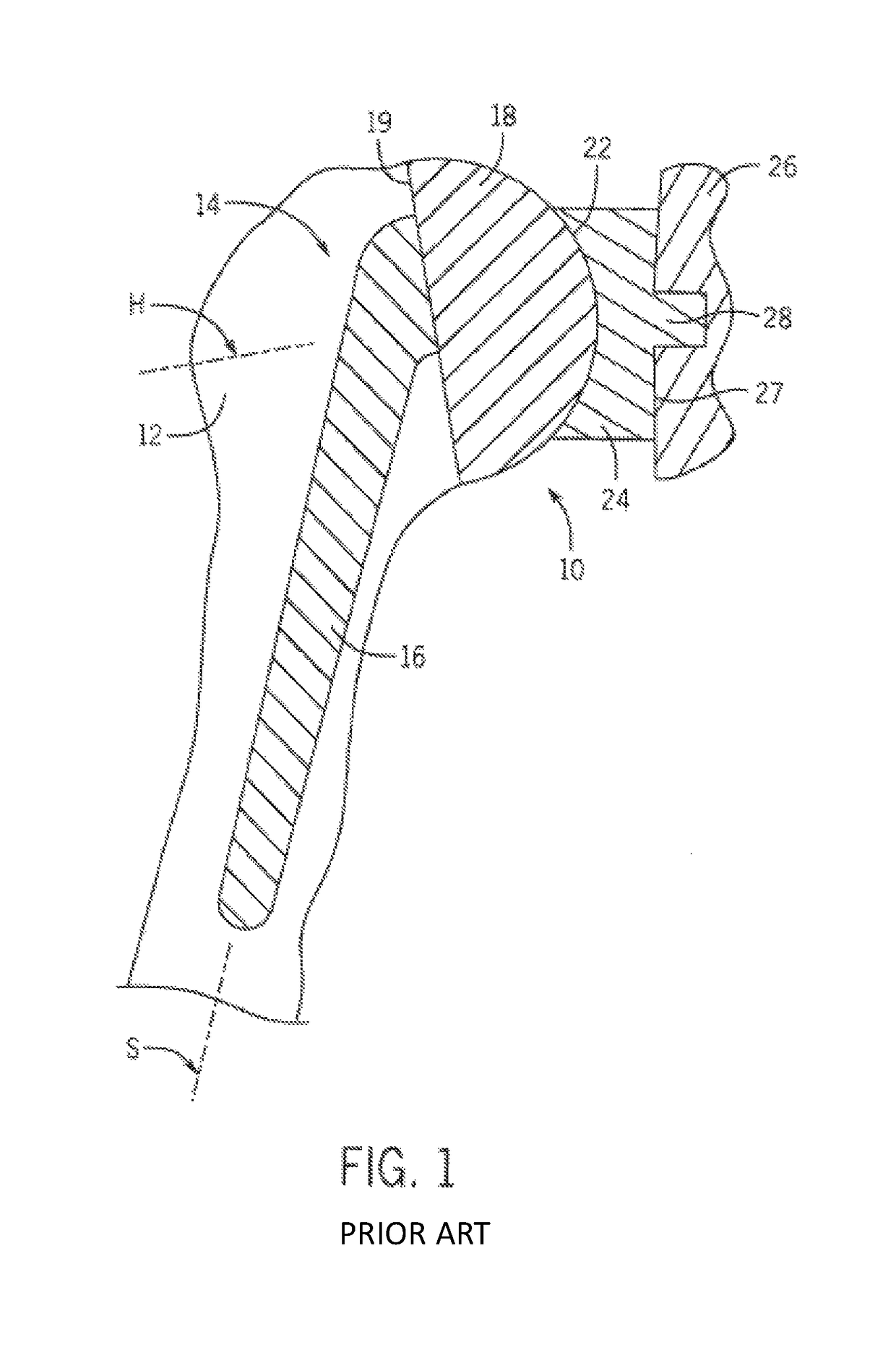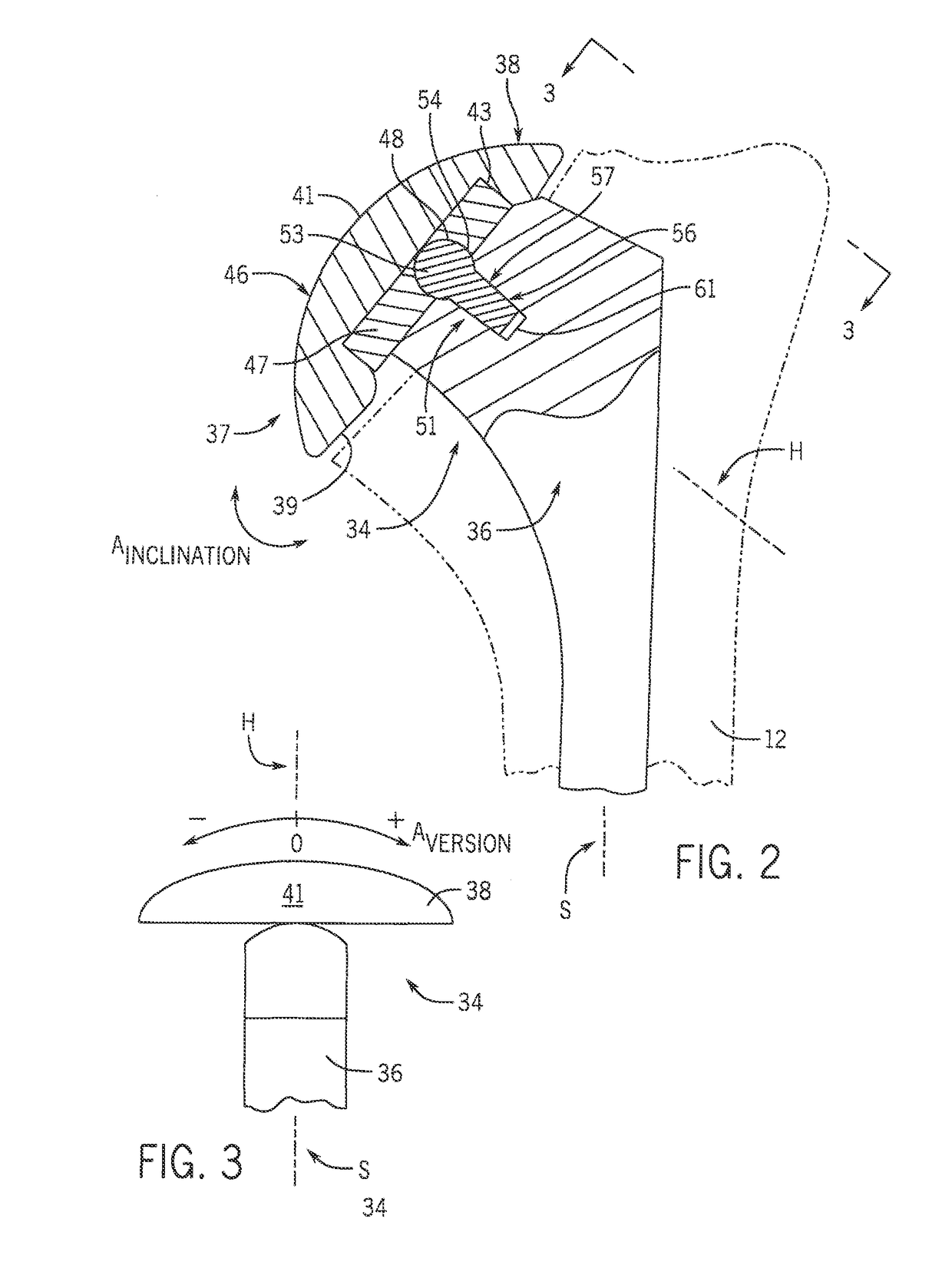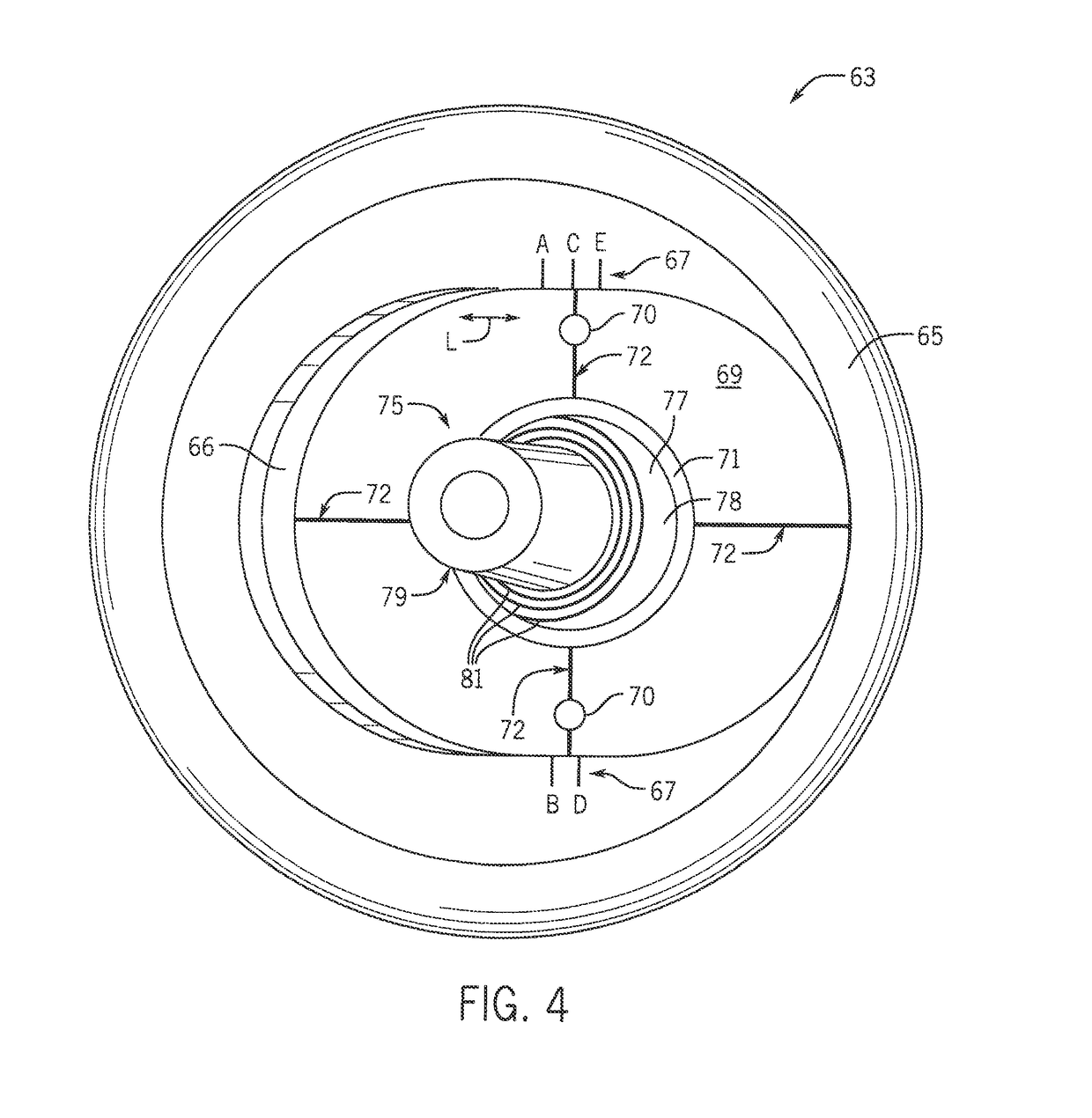Shoulder prosthesis with variable inclination humeral head component
a humeral head and shoulder prosthesis technology, applied in the field of shoulder prosthesis with variable inclination humeral head component, can solve the problems of significant component malposition, method disadvantage, and inability to accurately address the inclination range of the humeral head component, so as to facilitate the accurate and efficient design of the variable inclination system
- Summary
- Abstract
- Description
- Claims
- Application Information
AI Technical Summary
Benefits of technology
Problems solved by technology
Method used
Image
Examples
Embodiment Construction
[0051]Looking first at FIG. 1, there is shown an example conventional shoulder prosthesis 10. The upper portion of the humerus 12 is replaced by a humeral component 14 including a stem 16 that extends into a bore formed within the humerus 12. Typically, the stem 16 is fixed within the bore formed within the humerus 12. The stem 16 has a longitudinal stem axis S. A generally hemispherical head 18 is connected to the stem 16. Alternatively, the head 18 is integral with the stem 16. The hemispherical head 18 has a base surface 19 and a longitudinal head axis H. The hemispherical head 18 of the humeral component 14 articulates with a complementary concave section 22 of a glenoid component 24 that is fixed within the glenoid cavity of the scapula 26 using cemented or uncemented posts 28. The glenoid component 24 includes a base surface 27 opposite the concave section 22 that serves as an articular surface of the glenoid component 24.
[0052]Referring now to FIGS. 2-3, there is shown an exa...
PUM
 Login to View More
Login to View More Abstract
Description
Claims
Application Information
 Login to View More
Login to View More - R&D
- Intellectual Property
- Life Sciences
- Materials
- Tech Scout
- Unparalleled Data Quality
- Higher Quality Content
- 60% Fewer Hallucinations
Browse by: Latest US Patents, China's latest patents, Technical Efficacy Thesaurus, Application Domain, Technology Topic, Popular Technical Reports.
© 2025 PatSnap. All rights reserved.Legal|Privacy policy|Modern Slavery Act Transparency Statement|Sitemap|About US| Contact US: help@patsnap.com



